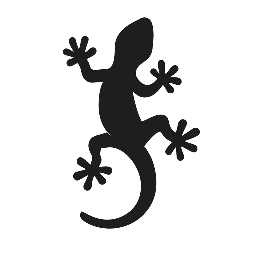As a responsible reptile keeper, you know that providing the right food is crucial. You’ve mastered the art of gut-loading and know the difference between a staple green and an occasional treat. But providing nutritious food is only half the battle. Without proper supplementation, even the best diet can fall short, leaving your pet vulnerable to serious health issues.
This is where calcium and Vitamin D3 come in. This critical duo is the foundation of your reptile’s skeletal health. Understanding how, why, and when to provide them is non-negotiable for ensuring your pet thrives.
This guide will break down the importance of these supplements and provide a clear, easy-to-follow schedule for your reptile.
Why Calcium and D3 are a Power Couple
Think of calcium and D3 as a lock and key.
- Calcium is the building block. It’s essential for strong bones, but it also plays a vital role in muscle function, nerve signaling, and egg development in females.
- Vitamin D3 is the key. It allows your reptile’s body to absorb and use the calcium from its diet. A reptile can be fed a diet packed with calcium, but without adequate D3, it will be unable to process it.
When this system fails, reptiles develop Metabolic Bone Disease (MBD). This devastating condition causes the body to pull calcium directly from the bones, leaving them soft, brittle, and prone to fractures and deformities. Early signs can be subtle—lethargy and twitching—but can progress to a rubbery jaw, swollen limbs, and paralysis.
Proper supplementation is the number one way to prevent MBD.
Choosing Your Powdered Gold
Walk into a pet store and you’ll likely see three types of reptile powders:
- Plain Calcium: Just calcium carbonate, with no added vitamins.
- Calcium with D3: Calcium carbonate with added Vitamin D3.
- Reptile Multivitamin: A blend of many vitamins (like A and E) and minerals.
You will need a rotation of these supplements. The Calcium with D3 and the Multivitamin are the most critical components of your schedule.
The Supplementation Schedule: A Guide for Every Age
This schedule is a general guideline for most common pet lizards like bearded dragons and leopard geckos. Always remember that factors like the quality of your UVB lighting can influence your pet’s specific needs.
How to Supplement: Simply place your feeder insects in a plastic bag or cup, add a pinch of the designated powder, and shake gently to coat them before feeding. This is known as “dusting.”
Baby/Hatchling (0-6 Months)
During this period of explosive growth, the demand for calcium is at its absolute highest.
- Calcium with D3: Dust insects 4-5 times per week.
- Multivitamin: Dust insects 2 times per week.
- Pro-Tip: Use the multivitamin and calcium on different days to ensure a balanced intake.
Juvenile (6-18 Months)
Growth is still steady but has started to slow down. You can begin to slightly taper the supplementation schedule.
- Calcium with D3: Dust insects 3-4 times per week.
- Multivitamin: Dust insects 1-2 times per week.
Adult (18+ Months)
The focus now shifts from building bone to maintaining health. It’s important to avoid over-supplementing D3, which can be toxic over time (a condition called hypervitaminosis D).
- Calcium with D3: Dust insects 2-3 times per week.
- Multivitamin: Dust insects once every 1-2 weeks.
- Pro-Tip: On non-supplement days, you can lightly dust with plain calcium if you wish, especially for egg-laying females.
The Unbreakable Link: UVB Lighting and D3
You cannot talk about D3 supplementation without talking about UVB lighting. Diurnal (day-active) reptiles, like bearded dragons, naturally synthesize their own D3 when their skin is exposed to high-quality UVB rays.
- High-Quality UVB is Essential: A proper UVB light source allows your reptile to self-regulate its D3 production. This is the most natural and safest method.
- Supplements are Backup: Dietary D3 acts as a crucial safety net, ensuring your pet gets what it needs even if its UVB exposure varies. For nocturnal species like leopard geckos, which have minimal UVB exposure, dietary D3 is their primary source.
- Replace Your Bulbs: UVB output degrades over time, even if the bulb still produces visible light. Replace your UVB bulbs every 6-12 months, according to the manufacturer’s instructions.
A consistent dusting schedule, combined with a high-quality diet and proper UVB lighting, forms the three pillars of proactive reptile health. By mastering this routine, you are providing your pet with the essential support it needs for a long, strong, and vibrant life.

Leave a Reply